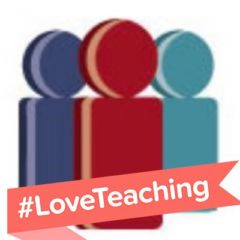Educators are hungry for real professional learning opportunities. For fresh, relevant, and timely content. For ideas that can be applied tomorrow. For a community of professionals, like-minded educators who cause us to shout “amen” and to suck in our breath with an “oh snap”.
This is why I concluded my summer conference tour with the National Network of State Teachers of the Year (NNSTOY) event. You don’t need to be a state teacher of the year or finalist to attend (my review from last year Professional Interloper) so I recruited two teachers from my school and joined the WATAC representatives. I spent five days in sweaty DC because this is a conference that doesn’t just talk about the work—NNSTOY tries to be about the work. A member driven organization, NNSTOY focuses their programming around issues of social justice and equity.
This year the conference focused on four strands; each with a guiding question. It was strand 1 “Elevating Our Voices for Educational Equity” and the essential question “how can we support the type of schooling (and society) that values, rather than marginalizes” that stayed with me all week. It followed me like campfire smoke I couldn’t wash out of my clothes.
In the last few years we are seeing more and more programs slap on the word “equity” (it’s the new “diversity”) but many groups don’t actually know what it means or make effort to try to understand what it means. This conference actively seeks to include a variety of perspectives and voices from the planning team down to the sessions offered. While last year’s program was solid, I noticed several changes this year. First, I noticed that more people of color were presenting as keynotes and in sessions. Second, I noticed there were more people of color attending. In fact, there was a concerted effort to include Black male educators as participants and as presenters in a way I’ve never seen at an education conference. Third, I noticed more folks engaged in conversations about race and equity (and it wasn’t only the people of color).
What’s the big deal, you may be asking. I’ve attended countless professional development opportunities where the presenters and participants were all white. In the same way I have concerns about a conference where mostly men present their ideas to a roomful of women in a profession dominated by women (yes, both of these really happen), I’m troubled by the lack of effort to counter homogeneous professional settings that lead to groupthink and spread of a dominant culture that isn’t reflective of the diversity within our classrooms. Understanding equity starts with intentional organizational reflection about what creates inequity.
We can create and support the type of schooling and society that values equity.
It starts with the teachers. Don’t be afraid to interrogate the demographics of our school and professional learning communities. NNSTOY is by no means perfect. It was still full of interchangeable white women (as is the profession), but it’s trying to be a model for what true inclusion might look like. It’s intentionally creating a professional learning space where white, black, and brown educators come together to wrestle with what it means to teach for social justice, racial justice, and equity. Get in the habit of looking around the room–who’s at the table? Who’s even invited to participate in the conversation? What’s the ratio of men to women, young & old, black/white/brown? These details matter. We need to learn from people who have lived a different life than we have. We need to learn with others who don’t live where we do, dress like we do, speak like we might, or racially identify as we do, but who are working on behalf of all our students.
It flows into our classrooms. We continually need to examine our curriculum. Do your students see themselves in the texts? Are they reading about experiences other than their own? Wesley Williams, II (watch the video on his home page) framed the entire conference he asked us to consider “And How Are the Children?” If we frame the work we do with this question in mind, our student would actually be at the center of the choices we make. I have to ask myself how are the children in room 200? I want to answer–they’re good. The children are talented. The children are brilliant. The children are beautiful. Concurrently, I have to face the less comfortable answer. The children are homeless. The children underfed. The children are hurting. Dang it. I’m back to the question.
It moves through our system. When was the last time you looked around your school? How is the leadership structured? Who gets hired? Who influences the decision making? What do we believe about our students? How do we talk about our students? For more on this point, listen to Nate Bowling’s interview with Jose Vilson “A Conversation Worth Having,”
One of the most significant takeaways from NNSTOY 2017 was that it doesn’t really matter if you’ve earned a teaching award or other recognition– we all have the power and the responsibility to lift our voices about educational equity and support that type of schooling and society that values equitable access and opportunity for all our students.

Love this, Hope. Your words mean something.
Hope, thank you for writing this and for highlighting Wesley’s brilliant opening. No, we are not perfect and never will be. We are conscious learners. And you’ve told me that we are indeed learning. I’m so glad that you are part of the fabric of who we are.